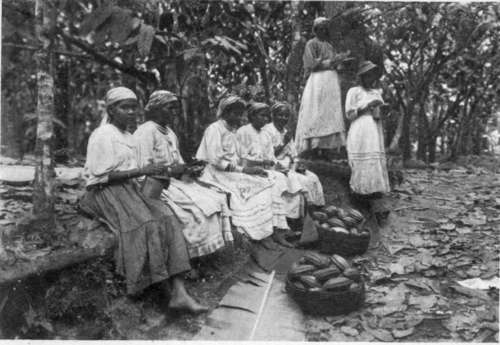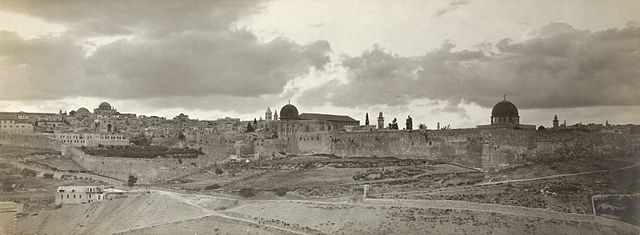by Dr. Nathan Cardon and Dr. Simon Jackson, University of Birmingham (Conference organisers)
On May 25 and 26 2017 the Department of History at the University of Birmingham hosted Everyday Empires: Trans-Imperial Circulations in a Multi-Disciplinary Perspective. Sponsored by Past & Present, the Birmingham Research Institute for History and Cultures, and the Centre for Modern and Contemporary History, the purpose of the conference was three-fold. First, it set out to improve intellectual engagements between scholars working within particular historiographies of empire, with the goal of promoting greater cross-fertilization of methods and ideas. The second goal was to encourage perspectives that spanned career stages. Accordingly, each panel consisted of a Ph.D. student, an Early Career Researcher, and an established academic, with a view to generating an inclusive conversation that gave equal time to scholars’ research, no matter where they were on their career path. A series of blog posts for Past & Present, co-written by each of the panels, will therefore follow this one, blending the perspectives of more senior and junior researchers. Lastly, and our focus with this post, the conference tested whether an everyday approach to empire worked as an analytical category. Given the range of intellectually stimulating discussion that occurred, it became clear that a focus on the everyday and everydayness allowed us to learn from each other across historiographical barriers that often separate, for example, students of the Ottoman and US empires. At the same time, many of the conversations and presentations appraised the strengths and weaknesses of the everyday as an analytical lens, or wondered whether its prime virtue was perhaps historiographically connective rather than heuristic – a term, in other words, best adapted to collating historical perspectives across historiographies and methods. As James McDougall (Oxford) put it in the discussion after Daniel Bender’s (Toronto) provocative keynote: if empire is analysed in terms of the everyday, and thus potentially discernible in every practice and artefact found anywhere in a world of empires, does this saturating empirical omnipresence foreclose our analytical sense of empire’s coercive violence, its obsessively hierarchical subjectification and its chronic spatial uneven-ness? The accusations of trivialisation levelled in the 1990s at Alltagsgeschichte’s engagement with the history of Nazism were echoed here.1
But if the participants in the conference highlighted this risk from the outset, they also flagged the concomitant capacity of a focus on the everyday to recover the nuanced politics of seemingly transparent everyday practices. They also noted the unusual capacity of historical-ethnographic interpretation of the everyday to anatomise the operation of agency. In other words, a focus on the everyday, mundane practices of empire illuminated people and events, objects and subjectivities that can often otherwise be obscured.

“Girls working on a British cocoa plantation”, Trinidad, British West Indies, c. 1900
The effectiveness of everyday resistance to the infrastructure projects of empire was well demonstrated in Samiksha Sehrawat’s (University of Newcastle) discussion of medical practice in colonial India. Sehrawat noted the effective resistance of patients to the ideas and practices of colonial medicine’s authoritarian governmentality, and she discussed the gendered construction of colonized women as an index of colonial development, while also probing the importance of rumour as a source. John Hennessey (Linnaeus University), meanwhile, documented the Ainu people of late nineteenth century Hokkaidō, and their efforts to protect their traditions in the face of a Japanese settler colonialism that drew powerfully on the paradigm of the US West to present itself as a modern and central exponent of the new imperialism. Hennessey also underlined the legacies of colonisation in Hokkaidō’s contemporary infrastructure, for instance at hydroelectric dam sites. Catriona Ellis (University of Edinburgh) further developed the theme of the contemporary persistence of colonial everyday infrastructures by discussing the nostalgic perpetuation in museums and collections of the artefacts of children’s play in colonial South Asia. She showed how the naturalisation of new narratives of childhood playfulness relied on gendered distinctions, classed access to commodified playthings, and on the colonial infantilising and racialisation of Indian culture. But Ellis also demonstrated how Indian experts participated in the new international expertise of the 1920s to resist these dynamics and assert equality.
The circulations of international experts across imperial spaces and frontiers evoked by Ellis were taken up and expanded by James McDougall, who in a study of deportation and migration in French Africa and across the Atlantic contrasted the fantasised geographies of colonial space with the specific, everyday movements of the colonized, and the understandings of space discernible in such movements. In a challenge to a model of empire popularised by Frederick Cooper, for McDougall, emphasising the everyday allowed an analysis of the space of empire as a practised culture and as constitutive of an archipelago of locations, rather than as a unified imperial territory characterised by simultaneous integration and differentiation. Jasmin Daam (Kassel) too, in a paper on postcard communication and spaces of belonging in the Middle East mandates, argued for empire as a practice dependent on everyday networks that stretched across the formal boundaries of imperial space. She also anatomised the polyvalence of postcards as a primary source of information about everydayness – collected as well as sent, postcards were a form of mass media through their photography of landscape and their dissemination of genres of representation, even as they formatted the expression of emotions of longing, loss and homesickness. Manjeet Barua (Jawaharlal Nehru University), meanwhile, focused on one frontier space in colonial Assam, exploring the relationship of a British tea plantation owner to his Indian servant in order to examine the arbitrage of an imperial frontier by capitalist colonial enterprise, but also by indigenous people. Barua pointed up the unequal power relations of empire, but argued that such relations are interdependent not binary, and were reliant on the frontier space as simultaneously imperial but also very distant from the colonial centre.

“Jerusalem panorama early twentieth century”, This work is from the Matson (G. Eric and Edith) Photograph collection at the Library of Congress. According to the library, there are no known copyright restrictions on the use of this work.
The focus on the discrepancies between formal imperial models and the varied realities of local everyday practice facilitated by movement across and between imperial space was further developed by Artemy Kalinovsky (Amsterdam). Kalinovsky traced the career of the “dual sector model”, often associated with the development economist W.A. Lewis’s work on industrialisation in the British colonial empire of the 1940s and 1950s, in Soviet Central Asia. Bringing into analytical contact two regions rarely considered together, Kalinovsky noted how Lewis, in his work on British colonies, drew inspiration from Soviet industrialisation of the 1930s, but also from direct observation of everyday urban labour markets. Kalinovsky contrasted the grand official Soviet plans for industrialisation and liberation of the peasantry from the perceived backwardness of farming, with the reality of uneven success and an eventual switch to cottage industry by the 1980s, despite the emotional investment in industrialisation of the development economists and officials whose oral testimony provided important sources for the everyday history of development. Justin Jackson (NYU), likewise contrasted formal imperial politics with the irreducibly everyday reality of the politics of class, nation and social belonging. Focusing on the US empire and on the construction of sovereignty, he tracked sex work, road building and interpreting as the US military transferred labour practices between Cuba and the Philippines, playing on colonial subjects’ liminality and on spatial unevenness between urban and rural areas. Finally, Mo Moulton (Birmingham), followed the material phenomenon of Irish dairy cooperatives to anatomise the everyday catalysing of new visions of Irish social and national life across the political chronology of the Irish nation’s emergence from the space of British empire into a world market.
Moulton’s paper nicely illustrated a point made forcefully by Daniel Bender (Toronto) in his bravura keynote, which tracked the global circumnavigation of US zoo directors as they collected animals and sampled the mores of the 1930s-colonial everyday by steamship. Bender argued that the everyday as a category of analysis forces the material and the subjective to the forefront of historical interpretation, allowing historians to practice their craft in new ways and infusing their own work with an improved sense of the realities of, for example, labour in colonial situations of the past.

“The elephant munition ‘war-worker’ at Sheffield”, By uploaded by user:Mattes [Public domain], via Wikimedia Commons
Another key theme to emerge from the conference was the tension between mobility and locality. Steve Tuffnell noted that the concept of the “trans-imperial” has already achieved buzzword status even before it’s defined. He argued that the trans-imperial allows us to dissect the local and find the layers of global imperial forces shaping colonizer and colonized lives. In many ways, the conference reaffirmed the local as the place in which global networks are crystalised. Shahmima Akhtar (Birmingham) used the Irish exhibits at the 1893 Columbian World’s Fair in Chicago to explore the tensions between localities: for instance, between the nostalgia that informed the exhibit space itself and the mobilities of the Irish diaspora in the United States. Put in the context of British imperial control of Ireland, Akhtar pushed beyond these tensions to bring attention to the rhythms and speed of movement within the turn-of-the-century’s trans-imperial world. Likewise, both Chao Ren (Michigan) and Ruth Morgan (Monash) explored the imperial travels of the rickshaw and hydrologists to both demonstrate global circuits of imperial knowledge but also place these circuits in local contexts in which their meaning was often transformed by everyday people. The benefit of taking a trans-imperial perspective—whether it be in examining a locality or tracing the movement of people and ideas—is that it brings to the forefront unequal and contested power relations that transnational or global history can often obscure.

“The Columbian Exposition”, Chicago, Illinois, 1893, (from Library of Congress)
Perhaps like all good workshops Everyday Empires left us with more questions than answers. It was clear that the focus on the everyday allowed an exceptionally diverse set of scholars to talk to each other and to think together, across standard historiographical boundaries, about how empire worked. It revealed the ways in which empire was woven into the fabric of the most mundane aspects of life in both the colony and metropole, raising questions about which spaces and practices are privileged for analysis and which are neglected. It also showed that these spaces and practices were far from separated by imperial frontiers, but were instead interconnected in specific ways, across a trans-imperial world. At the same time, the emphasis on the everyday, somewhat paradoxically, seemed to mitigate the focus on the power of empire to coerce and dominate. The violence inherent to the racialised structures of exclusion and subjugation that sustained the imperial worlds of the past and of today were often muted in many of the papers. With this in mind, the future of everydayness as a category for studies of empire will require reflexivity about the ways it can illuminate and obscure. We must consciously write coercive and violent power relations back into the history of the everyday, while making the most of the category’s capacity to emphasize connections as opposed to the false dichotomies of imperial structures, and while deploying its capacity to identify spaces and practices of empire that have been neglected in the extant historiography.
A conference Storify can be viewed here.
Past & Present was pleased to support this event and others like it. We welcome funding applications from historians of all fields and time periods at any stage in their career. More information can be found here.
Footnotes
[1] Paul Steege et al., “Review Article: The History of Everyday Life: A Second Chapter,” Journal of Modern History 80 (2008): 358–78.
[2] Something German historians working in the field of alltagsgeschichte have long understood. See for instance Andrei Sokolv’s chapter “The Drama of the Russian Working Class and New Perspective for Labour History in Russia” in Jan Lucassen, ed. Global Labour History: A State of the Art (Bern: Peter Lang, 2006).
